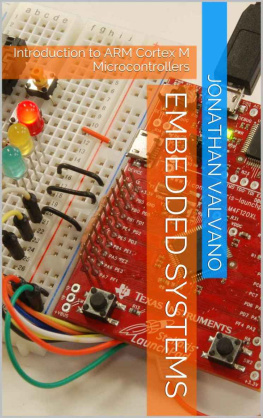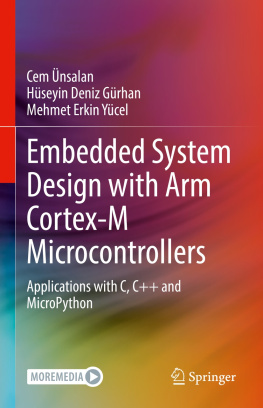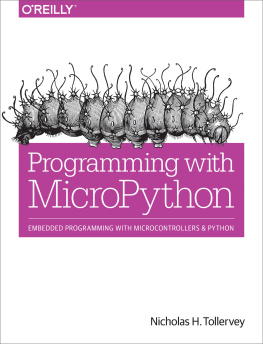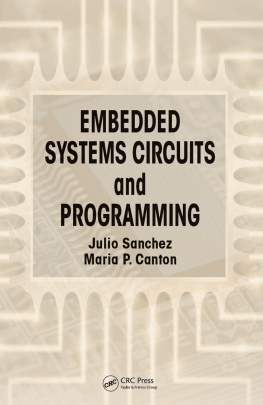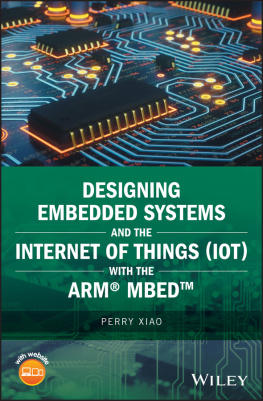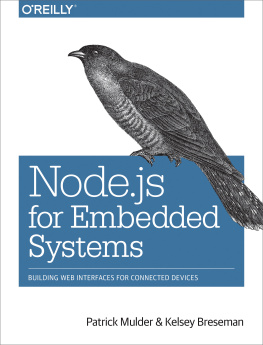Jonathan Valvano - Embedded Systems (Introduction to Armxae Cortexu2122-M Microcontrollers), Fifth edition
Here you can read online Jonathan Valvano - Embedded Systems (Introduction to Armxae Cortexu2122-M Microcontrollers), Fifth edition full text of the book (entire story) in english for free. Download pdf and epub, get meaning, cover and reviews about this ebook. year: 2014, publisher: Jonathan Valvano, genre: Computer. Description of the work, (preface) as well as reviews are available. Best literature library LitArk.com created for fans of good reading and offers a wide selection of genres:
Romance novel
Science fiction
Adventure
Detective
Science
History
Home and family
Prose
Art
Politics
Computer
Non-fiction
Religion
Business
Children
Humor
Choose a favorite category and find really read worthwhile books. Enjoy immersion in the world of imagination, feel the emotions of the characters or learn something new for yourself, make an fascinating discovery.
- Book:Embedded Systems (Introduction to Armxae Cortexu2122-M Microcontrollers), Fifth edition
- Author:
- Publisher:Jonathan Valvano
- Genre:
- Year:2014
- Rating:4 / 5
- Favourites:Add to favourites
- Your mark:
Embedded Systems (Introduction to Armxae Cortexu2122-M Microcontrollers), Fifth edition: summary, description and annotation
We offer to read an annotation, description, summary or preface (depends on what the author of the book "Embedded Systems (Introduction to Armxae Cortexu2122-M Microcontrollers), Fifth edition" wrote himself). If you haven't found the necessary information about the book — write in the comments, we will try to find it.
This book, now in its 5th edition, is the first in a series of three books that teach the fundamentals of embedded systems as applied to the ARM Cortex-M family of microcontrollers. This first book is an introduction to computers and interfacing focusing on assembly language and C programming. The second book Embedded Systems: Real-Time Interfacing to ARM Cortex-M Microcontrollers focuses on hardware/software interfacing and the design of embedded systems. The third book Embedded Systems: Real-Time Operating Systems for ARM Cortex-M Microcontrollers is an advanced book focusing on operating systems, high-speed interfacing, control systems, and robotics. The third volume could also be used for professionals wishing to design or deploy a real-time operating system onto an ARM platform. This first book is an introductory book that could be used at the college level with little or no prerequisites.
An embedded system is a system that performs a specific task and has a computer embedded inside. A system is comprised of components and interfaces connected together for a common purpose. This book is an introduction to embedded systems. Specific topics include microcontrollers, fixed-point numbers, the design of software in assembly language and C, elementary data structures, programming input/output including interrupts, analog to digital conversion, digital to analog conversion.
The book will cover embedded systems for ARM Cortex-M microcontrollers with specific details on the LM3S1968, TM4C123, and TM4C1294. Most of the topics can be run on any of these microcontrollers. In these books the terms LM3S LM4F and TM4C will refer to families of microcontrollers with the Texas Instruments Stellaris line. Although the solutions are specific for the LM3S LM4F and TM4C families, it will be possible to use these books for other ARM derivatives.
The true engineering experience occurs not with your eyes and ears, but rather with your fingers and elbows. In other words, engineering education does not happen by listening in class or reading a book rather it happens by designing under the watchful eyes of a patient mentor. So, go build something today, then show it to someone you respect!
Jonathan Valvano: author's other books
Who wrote Embedded Systems (Introduction to Armxae Cortexu2122-M Microcontrollers), Fifth edition? Find out the surname, the name of the author of the book and a list of all author's works by series.

